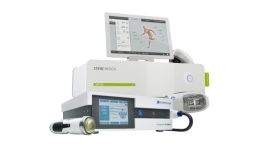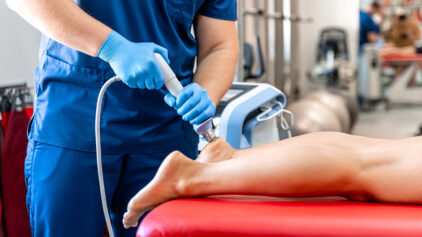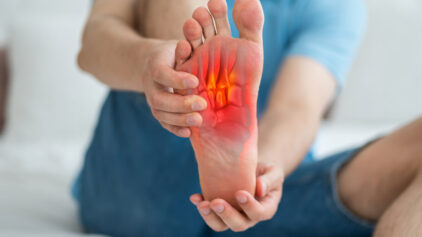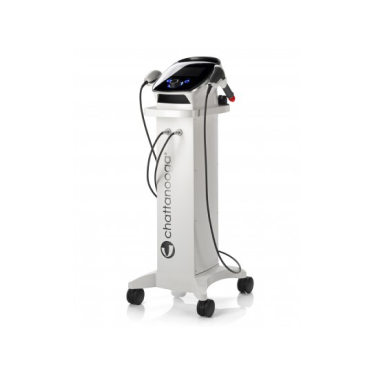Acoustic Compression Therapy (ACT) is a revolutionary, non-invasive, drug-free method of addressing musculoskeletal disorders and chronic pain. It’s not just effective; it’s a game-changer. ACT has been making headlines for its ability to significantly reduce pain, accelerate healing, restore mobility, and relieve chronic discomfort. This article will address the most frequently asked questions about this groundbreaking therapy, offering hope and optimism to those seeking relief.
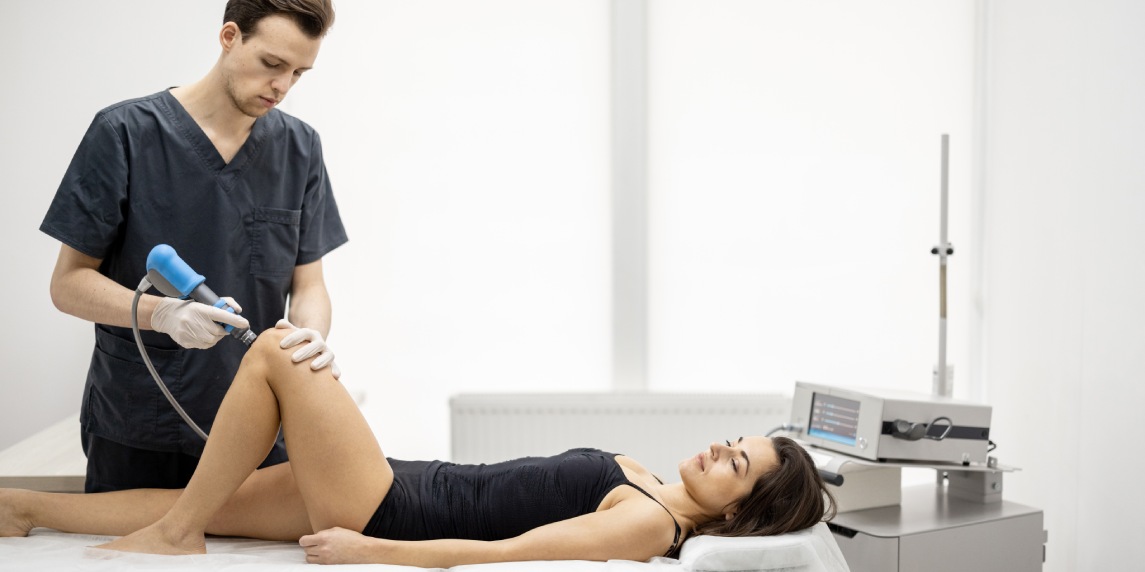
What is acoustic compression therapy?
Acoustic Compression Therapy creates high-energy sound waves directed into specific body areas at supersonic speeds. The sound waves compress, creating a small sonic boom within the tissue. Rest assured, the sonic boom is safe and harmless. However, the microtrauma it creates stimulates distress signals sent by the cells, causing the body to focus on healing the area, instilling a sense of security and trust in the safety of this therapy.
How does acoustic compression therapy work?
ACT is not the same as an ultrasound. The sound waves in ACT are 1000 times more concentrated than those in ultrasounds. A small handheld device administers high-frequency acoustic waves to the target area, and the intensity of the wave can be adjusted and tailored to the patient’s needs. These waves penetrate the skin and underlying tissues, reaching the injured area of the body that needs healing. It accelerates the healing process and reverses degenerative processes of chronic conditions by increasing blood flow to the area, breaking up scar tissue, increasing the energy output of surrounding cells, and activating immune cells to help regulate inflammation. This comprehensive approach sets ACT apart from other therapies.
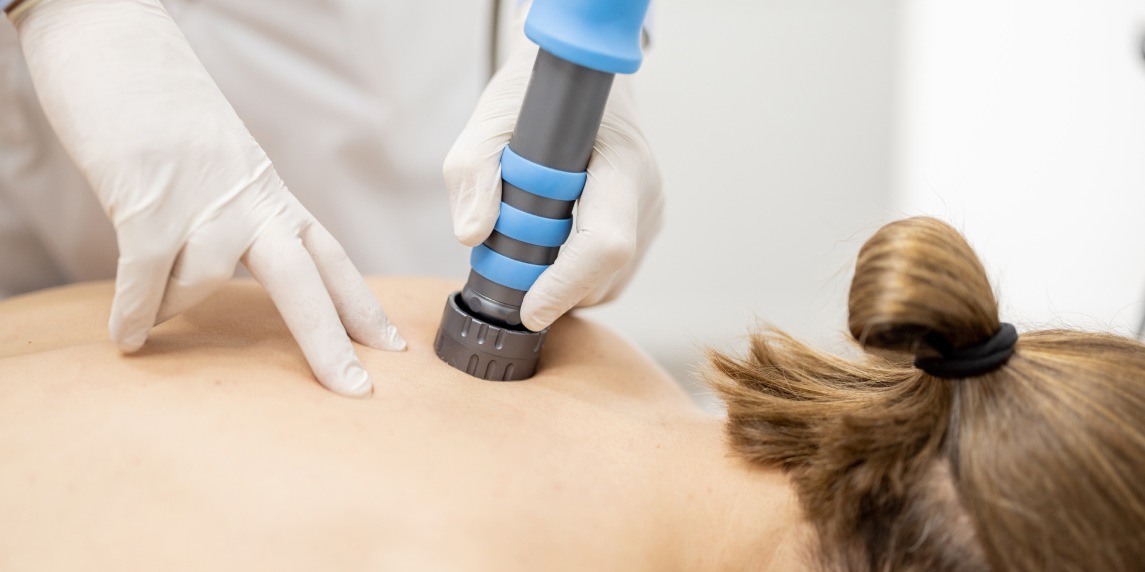
What conditions does acoustic compression therapy treat?
This highly effective, versatile therapy can treat various musculoskeletal conditions. Some include the following:
- Plantar fasciitis: inflammation of the tissues along the bottom of the foot.
- TMJ syndrome: dysfunctions affecting the jaw joints.
- Bursitis: inflammation of the bursae near joints
- Trigger points: focal, hyperirritable spots in a taut skeletal muscle band.
- Achilles Tendinitis: Pain and inflammation of the Achilles tendon.
- Tennis – and Golfer’s Elbow: inflammation of the tendons on the inside and outside of the elbow.
- Rotator Cuff Tendinitis: Inflammation of the tendons in the shoulder.
- Shin splints: Pain along the shin bone due to overuse.
- Back- and neck pain:
- Repetitive use and sports injuries: sprains, stains, meniscus tears, and more.
ACT calms overactive nerves and eases muscle spasms, increasing blood flow and nutrient transfer between cells and promoting healing.
Is acoustic compression therapy painful?
The therapist usually starts with the lowest wave intensity and gradually increases it during the session. Most patients describe the therapy as not painful but rather an uncomfortable experience. Very inflamed areas and peripheral joints, such as knees or knuckles, may experience slight pain while being treated. There might be mild pain and discomfort after the treatment, but it subsides quickly.
How many acoustic compression therapy sessions do I need?
A treatment usually takes five to twenty minutes, depending on the size and complexity of the treatment area. The duration of the treatment depends on the number of pulses used in an area, not the time spent on it. The number of treatments varies depending on the condition and severity. On average, three to six sessions are necessary to achieve results. More degenerative conditions will need more treatments and may take up to twelve or more treatments for internal organs. The effectiveness of the treatment is often evident after a few sessions. Still, individuals will have a personalized treatment plan according to their needs that must be completed for optimum results.
Benefits of acoustic therapy
ACT stimulates fast recovery and natural healing without surgical options. No anesthesia, incisions, or drugs are used. Pain relief is evident after a few sessions, and patients’ motion and function improve significantly.
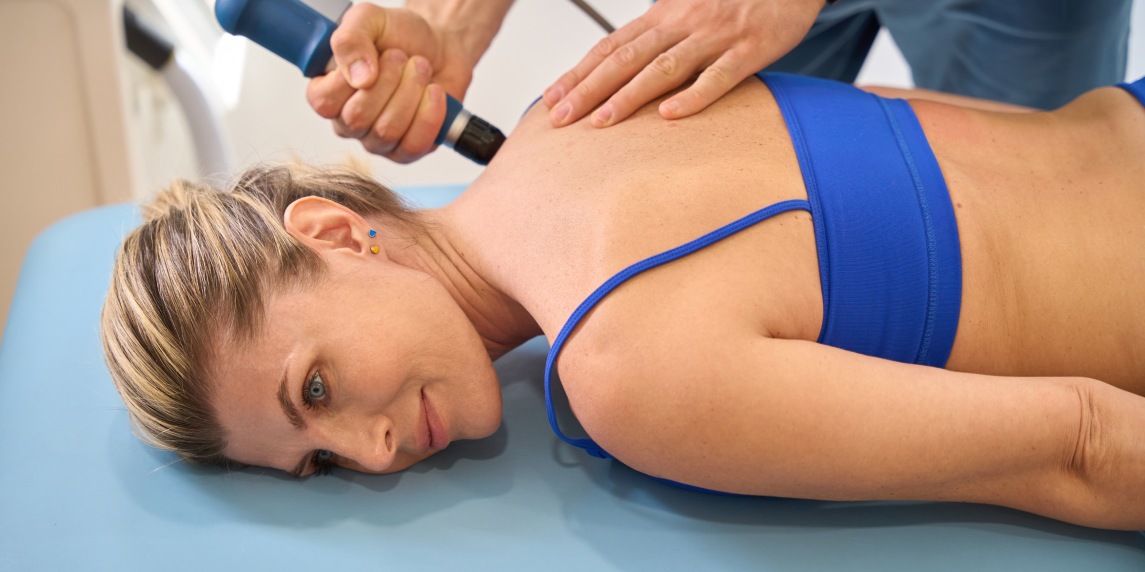
Can acoustic compression therapy help with chronic pain?
Acoustic compression therapy is highly effective in relieving chronic pain. The solid and short vibrations generated by the treatment in the surrounding cells help to break down scar tissues and increase blood flow. The wave stimulates the nerves in the area, overriding the pain signals and creating a “gate control mechanism,” allowing the nerves to send fewer signals about the pain as it is treated and heals. Many people with chronic pain have been able to reduce opioids after ACT, and patients can function for the first time without the help of opioids.
Is acoustic compression therapy safe for everyone?
ACT is FDA-approved, and its safety has been proven in scientific studies by nearly thirty years of clinical practice. No severe side effects have ever been reported. The excellent safety record does not interfere with prosthetics or implants as it is non-invasive and does not harm the treatment area. Certain conditions exist for people who should not go for acoustic compression therapy. Pregnant ladies and patients with bleeding disorders or taking anticoagulant medications should consult their doctor before undergoing ACT. Patients with nerve disorders, tumors, and infections should discuss potential dangers before opting for ACT. Some patients may experience mild bruising, swelling, redness, or slight discoloring. Still, usually, For the individual who has not responded well to other treatments, ACT could be a determining factor in relieving chronic pain and injuries. Dr Roy Nissim is a trusted chiropractor, and sports medicine expert. He specializes in ACT and can advise you to cancel or go for ACT.
Cost of acoustic compression therapy
The cost of ACT can vary depending on the number of sessions, the practitioner’s experience, and the location. It can range from $500 to $2000. Many practitioners, however, would compile an individual training program and treatment plan at a specific cost.
With all the advantages of acoustic compression therapy for musculoskeletal problems, it seems like a good choice for getting healing and mobility back. At Santa Monica’s Chiropractor and Sports Medicine Centre, you can meet with experts like Dr Roy Nissim to help you on the path to recovery with acoustic compression therapy.


